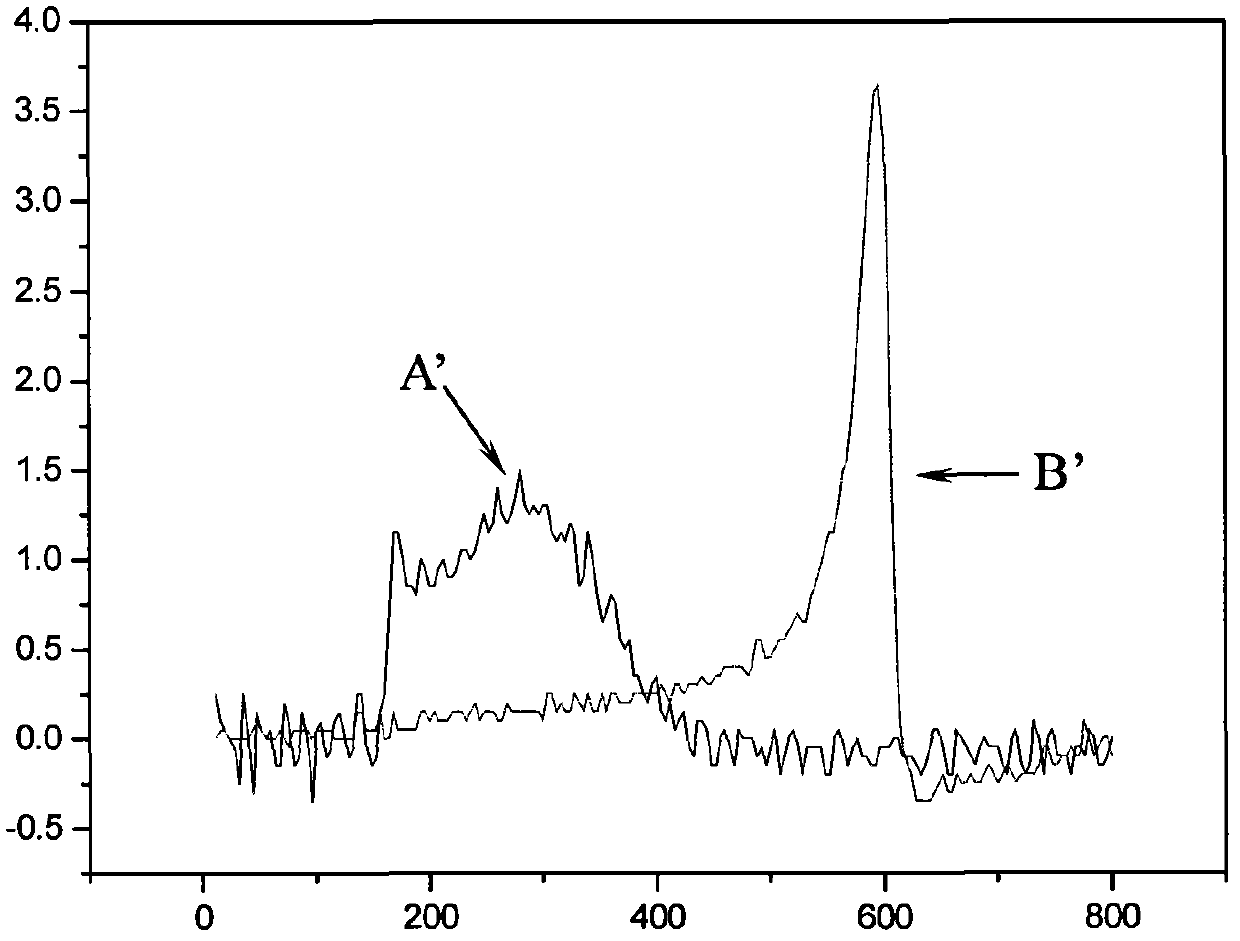Solution polymerization method
A polymerization method and solution technology, applied in chemical instruments and methods, drilling compositions, etc., can solve the problems of long initiator induction period, long time, inability to obtain ultra-high molecular weight acrylamide polymers, etc., and shorten the polymerization time. Reaction time, effect of eliminating polymerization inhibition
- Summary
- Abstract
- Description
- Claims
- Application Information
AI Technical Summary
Problems solved by technology
Method used
Image
Examples
Embodiment 1
[0041] (1) 150g of acrylamide (AM), 150g of 2-acrylamido-2-methylpropanesulfonic acid (AMPS), 29g of solid sodium hydroxide and 700g of water were mixed under stirring, and the aqueous solution obtained after mixing was cooled to 0° C., using 20% by weight sodium hydroxide solution to adjust the pH value of the aqueous solution to 8.2, and then adding 0.07g of EDTA disodium salt, 0.07g of urea, 0.01g of V50, 1 mL of 1% by weight of EDTA to the aqueous solution. For the tetramethylethylenediamine solution, the dissolved oxygen concentration in the aqueous solution was measured using an oxi3210 type dissolved oxygen meter (the same below) from WTW, Germany, and it was 14.5 ppm.
[0042] (2) The aqueous solution obtained in step (1) was transferred into a Dewar flask with a capacity of 1.5 L, and a thermocouple for recording the reaction temperature was added. Sodium sulfite was mixed, and 0.2 ml of ammonium persulfate solution with a mass concentration of 1% by weight was adde...
Embodiment 2
[0051] (1) Mix 225 g of acrylamide (AM), 75 g of acrylic acid (AAc), 40 g of sodium hydroxide with 700 g of water under stirring, cool the aqueous solution obtained after mixing to 10 ° C, and use a 20 wt % sodium hydroxide solution with a mass concentration The pH value of the aqueous solution was adjusted to 9, and then 0.01 g of EDTA disodium salt, 0.02 g of azodiisopropyl imidazoline, and 1 mL of a 1 wt % tetramethylethylenediamine solution were added to the aqueous solution. The concentration of dissolved oxygen in the aqueous solution measured by an oxygen meter was 11.2 ppm.
[0052] (2) The aqueous solution obtained in step (1) was transferred into a Dewar flask with a capacity of 1.5 L, and a thermocouple for recording the reaction temperature was added. Sodium sulfite was mixed, and 0.2 ml of potassium persulfate solution with a mass concentration of 1 wt % was added to the aqueous solution (the temperature of the aqueous solution was 10° C. at this time, and the con...
Embodiment 3
[0054] (1) 202g of acrylamide (AM), 98g of (2-acrylamido)ethyltetradecyldimethylammonium bromide and 700g of water were mixed under stirring, and the aqueous solution obtained after mixing was cooled to 5°C, The pH value of the aqueous solution was adjusted to 8 using a 20% by weight sodium hydroxide solution, and then 0.01g of EDTA disodium salt, 0.02g of azodiisopropyl imidazoline, 1mL of 1% by weight of EDTA were added to the aqueous solution. The concentration of dissolved oxygen in the aqueous solution of the tetramethylethylenediamine solution was 12.6 ppm as measured by a dissolved oxygen meter.
[0055] (2) Transfer the aqueous solution obtained in step (1) into a Dewar flask with a capacity of 1.5 L and add a thermocouple for recording the reaction temperature, keep the temperature of the aqueous solution at 5°C, and connect the aqueous solution with 0.05 g of solid under electromagnetic stirring. Sodium sulfite was mixed, and 0.15 ml of potassium persulfate solution ...
PUM
 Login to View More
Login to View More Abstract
Description
Claims
Application Information
 Login to View More
Login to View More - R&D
- Intellectual Property
- Life Sciences
- Materials
- Tech Scout
- Unparalleled Data Quality
- Higher Quality Content
- 60% Fewer Hallucinations
Browse by: Latest US Patents, China's latest patents, Technical Efficacy Thesaurus, Application Domain, Technology Topic, Popular Technical Reports.
© 2025 PatSnap. All rights reserved.Legal|Privacy policy|Modern Slavery Act Transparency Statement|Sitemap|About US| Contact US: help@patsnap.com


